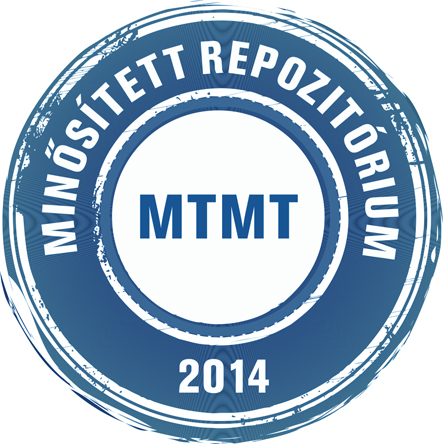B. Halász Éva: A fantombánok nyomában - avagy kik voltak a bánok? In: Acta Universitatis Szegediensis : acta historica, (144). pp. 43-50. (2019)
Előnézet |
Cikk, tanulmány, mű
historica_144_043-050.pdf Letöltés (379kB) | Előnézet |
Absztrakt (kivonat)
A tanulmány az Árpád- és Anjou-kori források alapján azt vizsgálja, hogy a pusztán banus tisztségnévvel, de működési terület megnevezése nélkül szereplő személyek milyen okból viselték ezt a címet. Az okok között megemlíthető a korábbi tisztségviselés, a vicebáni hivatal, a nem magyarországi bánság korábbi betöltése stb. Generally the ban was the leader of a banatus, what is to say he was the leader of a southern territory of Hungary. The first banatus was Slavonia (Croatia and Dalmatia). But there are several people called ban (banus) in the medieval charters, who are not listed in the modern archontological lists of the bans. The paper analyses the likely reasons of this phenomenon. The first reason could be the modification of the memories of a family. Naturally, the social situation of each family could have been better, if they had a famous ancestor. The office of the ban was more prestigious, than the office of his deputy, the viceban. In some cases the descendants of a viceban forgot that their ancestor had “only” been a viceban and started to use the title ban after his name. The second reason is the previously held position. The office of the ban gave authority and power to its holder, and it was even valid after he had left this office. In the charters the person, who had been a ban before, was called ban later on. The third example is the ban of Transsilvania. In the middle of the 13th century the head of Transsilvania was also called ban instead of voivoda. But the latter expression became accepted widely that time, so the phrase banus could not supersede it. The fourth reason is that two Bosnian bans resettled to Hungary in the 13th century and they kept their previous title. The fifth reason is the later position. Sometimes when a charter is known only from mentions or only its content was rewritten, the one who had been a ban at the time of the whole-text charter, was also written ban in the mentioning or just contently rewriting charter. Maybe the context was more precise in this way or the notary, the writer of the charter gave him respect. The sixth reason is the missing data. In some cases the office holding of a ban can not be verified from other charters.
| Mű típusa: | Cikk, tanulmány, mű |
|---|---|
| Egyéb cím: | Who were the bans? |
| Befoglaló folyóirat/kiadvány címe: | Acta Universitatis Szegediensis : acta historica |
| Dátum: | 2019 |
| Kötet: | 144 |
| ISSN: | 2676-9832 |
| Oldalak: | pp. 43-50 |
| Kiadó: | University of Szeged, Magyar Medievisztikai Kutatócsoport |
| Kiadás helye: | Szeged |
| Befoglaló mű URL: | http://acta.bibl.u-szeged.hu/66963/ |
| Kulcsszavak: | Bán, Bánság, Szlavónia, Horvátország, Erdély, Bosznia |
| Megjegyzések: | Bibliogr. a lábjegyzetekben ; összefoglalás magyar és angol nyelven |
| Feltöltés dátuma: | 2020. ápr. 21. 08:43 |
| Utolsó módosítás: | 2022. dec. 12. 08:59 |
| URI: | http://acta.bibl.u-szeged.hu/id/eprint/66968 |
 |
Tétel nézet |



